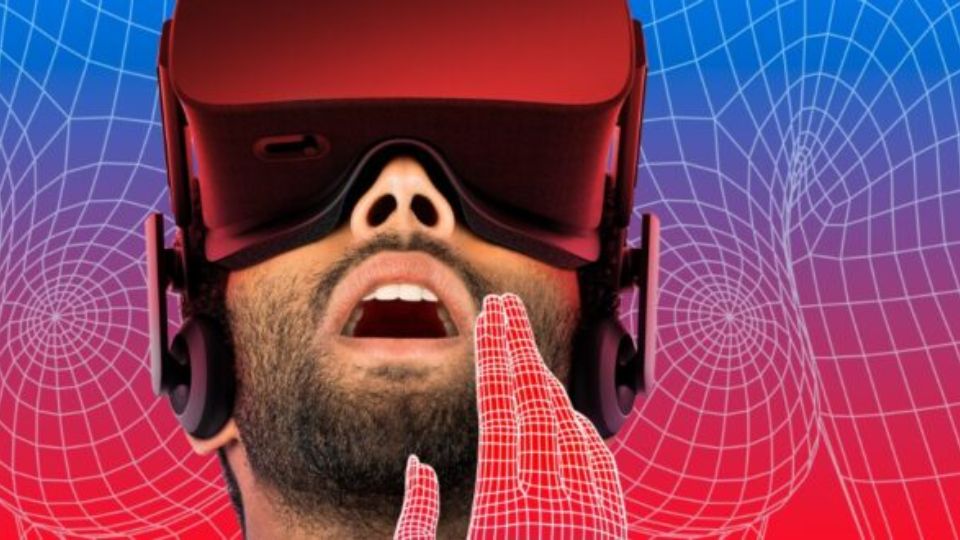
Virtual reality (VR) technology is reshaping the adult entertainment industry, offering unprecedented immersive experiences. Unlike traditional forms, VR engages users in a three-dimensional environment, creating a sense of presence and interaction that was previously unattainable. This transformation is not just a technical evolution; it’s a cultural and societal shift, redefining the boundaries of adult content.
Historical Context and Evolution

To appreciate the impact of VR in adult entertainment, it’s essential to understand its historical context. The adult industry has always been a forerunner in embracing new technologies, from the early adoption of home video formats to the rise of internet streaming.
Each technological leap expanded the industry’s reach and changed the way content is consumed. VR represents the latest, and perhaps most significant, of these shifts. It moves beyond merely watching content to experiencing it, offering a level of immersion that blurs the lines between fantasy and reality. CzechVR has got you covered.
Technological Underpinnings
The technological underpinnings of VR in adult entertainment are complex. VR headsets, motion tracking, and haptic feedback systems combine to create a deeply engaging experience.
Advanced graphics and 3D audio add to the realism, making the virtual environment more convincing. These technologies are rapidly evolving, continuously improving the quality and accessibility of VR experiences in adult entertainment.
Impact on Content Creation and Consumption

VR has significantly impacted both content creation and consumption in the adult industry. For creators, VR content requires a different approach to cinematography, storytelling, and interaction design. The traditional, passive viewer is now an active participant, which demands a rethinking of how scenes are structured and how narratives unfold.
For consumers, VR offers a more personal and intimate experience. This heightened sense of presence and interactivity is not just a novelty; it represents a new form of engagement with adult content.
Ethical Considerations and Challenges
The rise of VR in adult entertainment brings with it a range of ethical considerations and challenges. Issues like consent, privacy, and the psychological impact of highly immersive content are at the forefront.
The industry faces the challenge of navigating these issues responsibly while continuing to innovate. There’s also a need for greater discussion and understanding of the social implications of VR adult content, particularly in terms of how it affects relationships and societal norms.
Future Trends and Potential

Looking to the future, VR’s role in adult entertainment is poised for further growth and innovation. We’re likely to see advances in AI and machine learning further personalize experiences, making them more interactive and responsive to individual preferences.
There’s also potential for VR to move beyond purely visual and auditory experiences, incorporating other senses to create even more immersive environments. As VR technology becomes more accessible and affordable, its impact on the adult industry will only deepen, setting the stage for a continuing sensual revolution.
Societal Perception and Market Growth
The integration of VR into adult entertainment has also altered societal perceptions of the industry. Once viewed as a fringe or taboo sector, the technological sophistication and widespread appeal of VR have brought adult entertainment more into the mainstream conversation.
This shift is reflected in market growth; VR adult content is not just a niche within the industry but a growing segment with significant revenue potential. As VR technology becomes more mainstream, the adult entertainment sector is likely to benefit from increased acceptance and interest.
Personalization and User Experience

A key aspect of VR in adult entertainment is the increased potential for personalization. Unlike traditional formats where content is uniform for all viewers, VR allows for a more tailored experience.
Users can often customize avatars, settings, and scenarios to their preferences, making the experience more engaging and personal. This level of customization is transforming the user experience, making it more interactive and satisfying on an individual level.
Legal and Regulatory Implications
The expansion of VR in adult entertainment also raises important legal and regulatory questions. Different countries and regions have varying laws regarding adult content, and the immersive nature of VR adds new layers to these legal complexities.
Content creators and distributors must navigate these legal landscapes carefully, ensuring compliance while pushing the boundaries of what is possible within VR technology.
Technological Accessibility and Inclusivity
As VR technology becomes more affordable and widespread, issues of accessibility and inclusivity come to the fore. Ensuring that a diverse range of users can access and enjoy VR adult content is crucial for the industry’s growth.
This involves not just lowering the cost of VR hardware but also creating content that caters to a wide range of preferences and interests, promoting inclusivity in an industry often criticized for its lack of diversity.
Bridging Physical and Virtual Sensations

One of the most intriguing aspects of VR in adult entertainment is the potential to bridge the gap between physical and virtual sensations. Innovations in haptic technology and sensory feedback systems are making it possible to simulate physical touch and other sensations in a virtual environment.
This convergence of the physical and virtual adds a new dimension to adult content, offering experiences that are more immersive and realistic than ever before.
Conclusion: A Dynamic and Evolving Landscape
In summary, the sensual revolution brought about by Virtual reality in adult entertainment is multifaceted and dynamic. It represents a significant shift not just in how adult content is created and consumed, but also in how it is perceived by society.
As the technology continues to evolve and become more accessible, it will undoubtedly shape the future of the industry in ways that are currently difficult to fully predict.
The challenges, opportunities, and implications of this revolution will be critical areas for ongoing discussion and exploration as we move forward in this exciting and evolving landscape.












